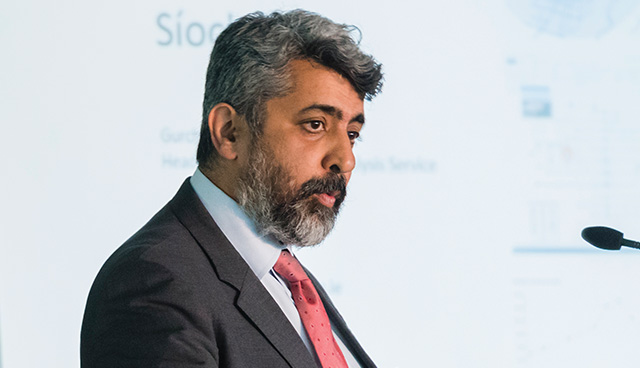Unlocking the power of data to understand and respond to crime


Head of Garda Síochána Analysis Service Gurchand Singh outlines how the service is supporting the strategic and operational objectives of the organisation.
Established in 2007 with the recruitment of senior management, including Singh to lead the team, the Garda Síochána Analysis Service began recruiting analysts a year later and continue to recruit on an ongoing basis.
The success of the service has prompted expansion with plans to add 25 further analysts to the existing 45 staff later this year.
Organisationally, there are three pillars to the service:
- Regional: providing analytical support to the six Garda Regions;
- National: providing support to national units; and
- Research: an existing unit which was brought under the auspices of the Analysis Service to support the analysts.
Singh outlines that initial and ongoing needs assessments helped identify the requirements of officers and align the work of the service with the strategic and operational objectives of the organisation.
The key functions for which the service develop data for are:
- identifying national and local policing priorities, including emerging crime and policing issues;
- supporting national and local strategy development;
- informing management decision-making;
- undertaking surveys (including public attitudes, experience of crime and cultural surveys etc.);
- supporting investigations;
- undertaking problem profiles of national and local crime, as well as suspect profiles; and
- conducting evaluations and results analysis.
Offering an insight into the service’s operations, Singh provides a focus on developing an approach to the response to assaults. The issue has become a cause for concern after an increasingly upward trend has taken place since 2013, on the back of a five-year decrease, was realised.
Singh says: “The first thing we do is try to unpick the problem and establish a cause as the first stage of the analytical journey. Looking at various data points – not just our crime data but also things like the retail sales index with a focus on alcohol and the HSE’s profiles on those attending Accident and Emergency.
“We need to work in partnership with security firms (to improve what happens in clubs and pubs), those who provide training to bar staff (to recognise emerging problems), licensees (to ensure that premises are run properly) and local authorities.”
“We could clearly see that the previous years of reduction had correlated with the recession and the more recent upward trend has aligned with the emergence of the nighttime economy.
“Once we established a reason, the spatial and temperance data allowed us to identify the key times these assaults were occurring and the hotspots in which they were taking place.”
However, as Singh explains, in this case a response to tackle the problem was not obvious. After conducting offender and victim profiles it was realised that while both tended to be males aged between, 18 to 30, the levels of repeat offending were very low. This made it difficult for the Gardaí to target offenders but also to support victims.
In response, An Garda Síochána have what Singh describes as an “evolving strategy”.
“Compared to other interventions such as those around burglary, where we have had successes, it was clear that this was going to be difficult to control.
“What we did was take a strong analytical evidence-based approach to the problem, looking at how other interventions had worked out and tailored them. What was clear was that policing alone could not solve the problem and that a strong partnership approach is required.
“We need to work in partnership with security firms (to improve what happens in clubs and pubs), those who provide training to bar staff (to recognise emerging problems), licensees (to ensure that premises are run properly) and local authorities.
“Away from pubs and clubs, the other main areas where these types of crimes were occurring was around taxi ranks and fast food outlets. We are working with local authorities around evacuating an area quicker and have discussed the potential impact opening up more spaces as food outlets might have.
“Of course, there are things we can do such as enforcing licensing laws, increasing public order policing in the main hot spots and taking an innovative approach to public campaigns that helps to raise awareness.
“All of this is ongoing work and we take a very pragmatic problem-solving approach which draws upon evidence to support strategic and operational activity.”
Singh states that developing the service is key to its improvement. Going forward he has identified key waypoints to ensure an effective service.
These include:
- Data: Ensuring strong governance; assessing data requirements; developing quality metrics; and filling data gaps.
- Processing information: Ensuring the infrastructure exists to access and process data; and getting ICT buy in.
- People: Building function to scale; developing analysts; ensuring career structure; and supporting the development of analysis in higher education.
- Actionable insights: Putting an onus on the analyst to deliver actionable insights; and creating a business process to integrate analysis into strategic and operational decision-making.
- Organisational culture: Developing lead analysts to act as change agents; educating non-analysts; proactively educating on analysis leading organisational outcomes; and demonstrating the value of analysis and measuring it where possible.





